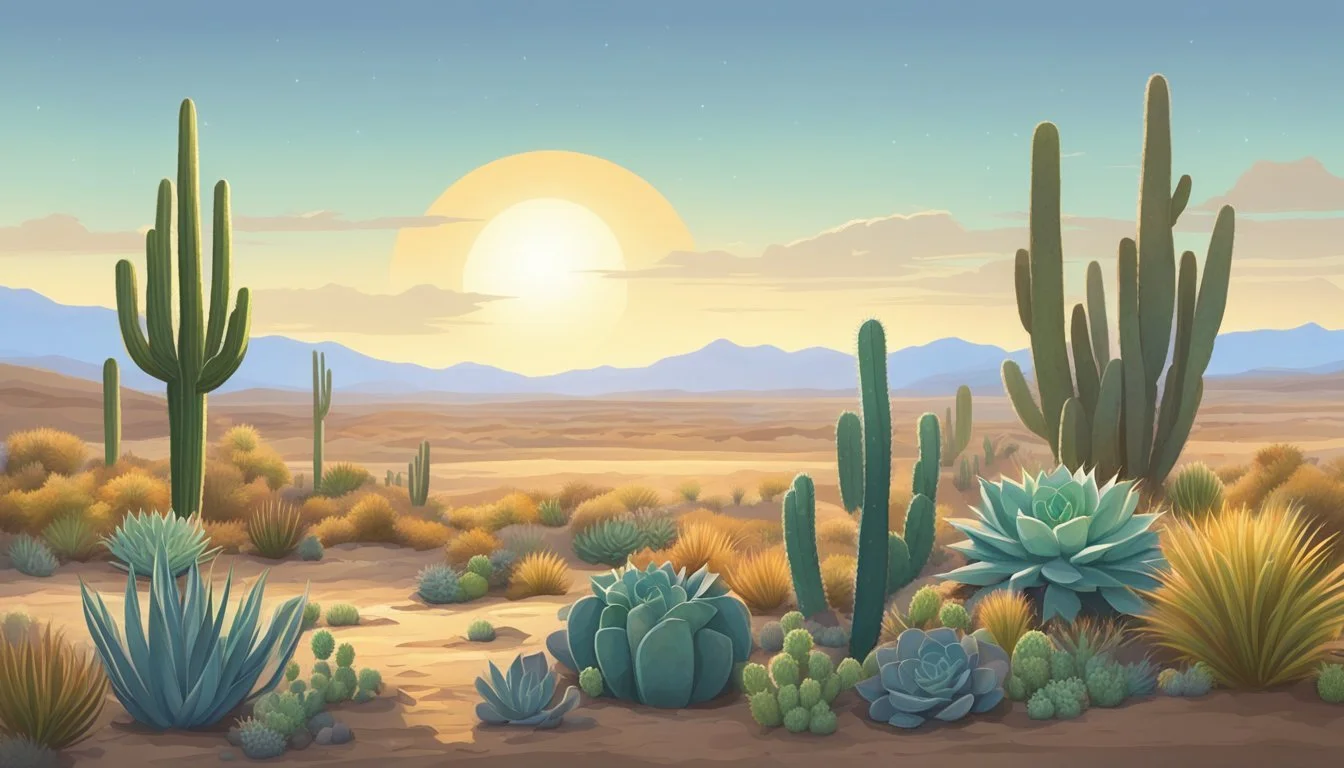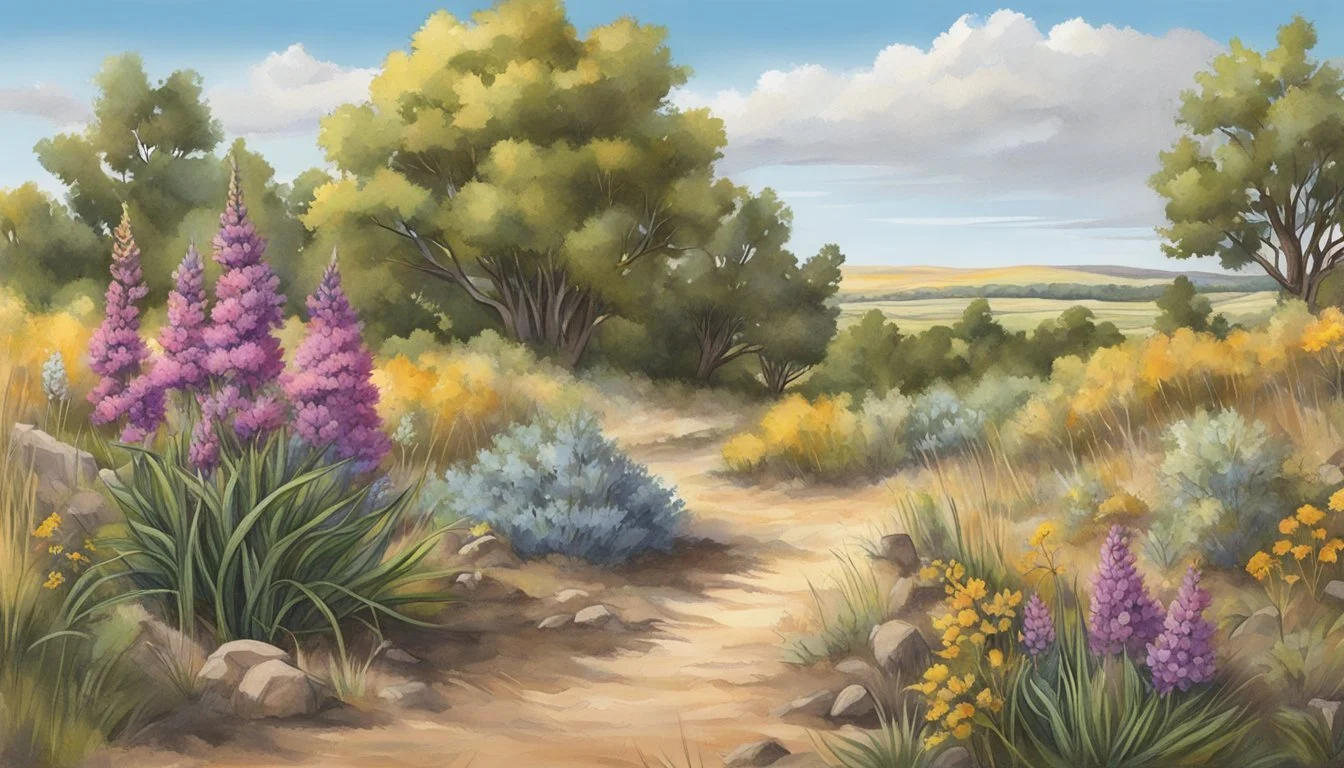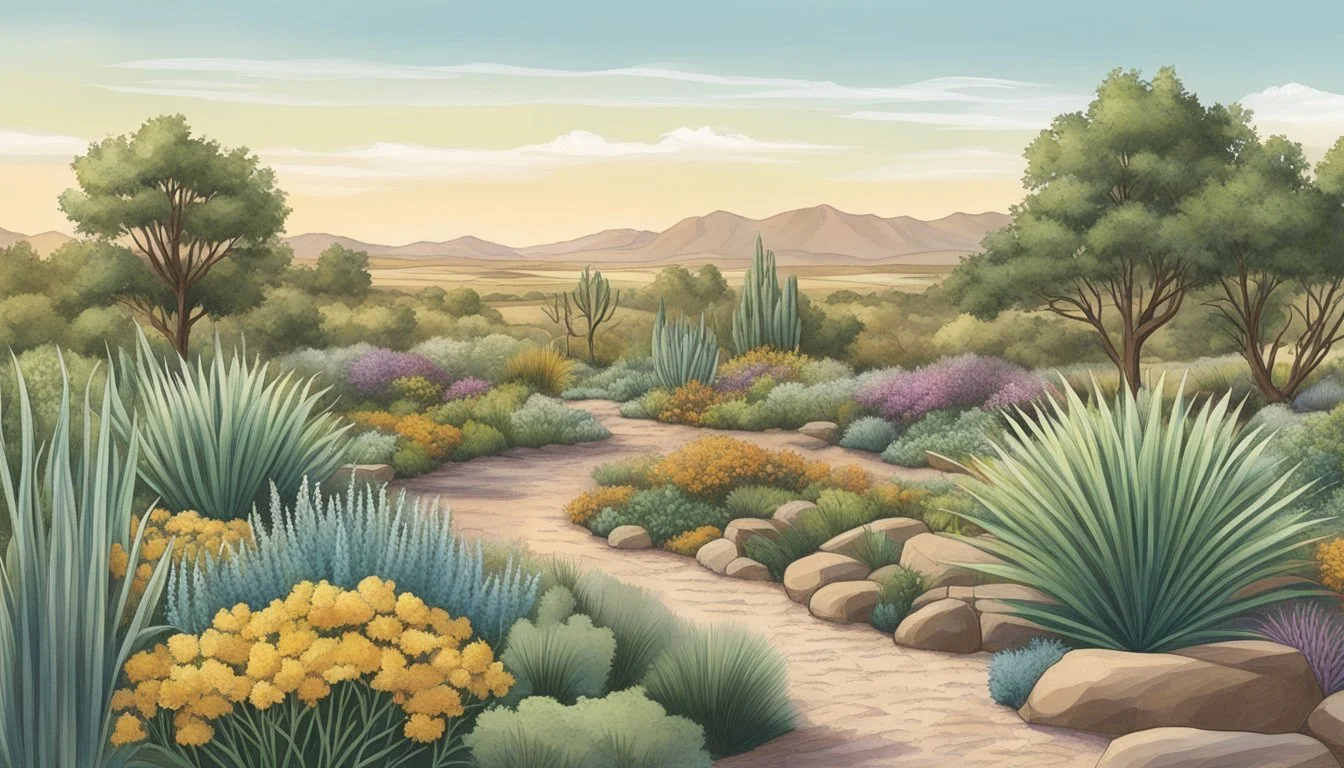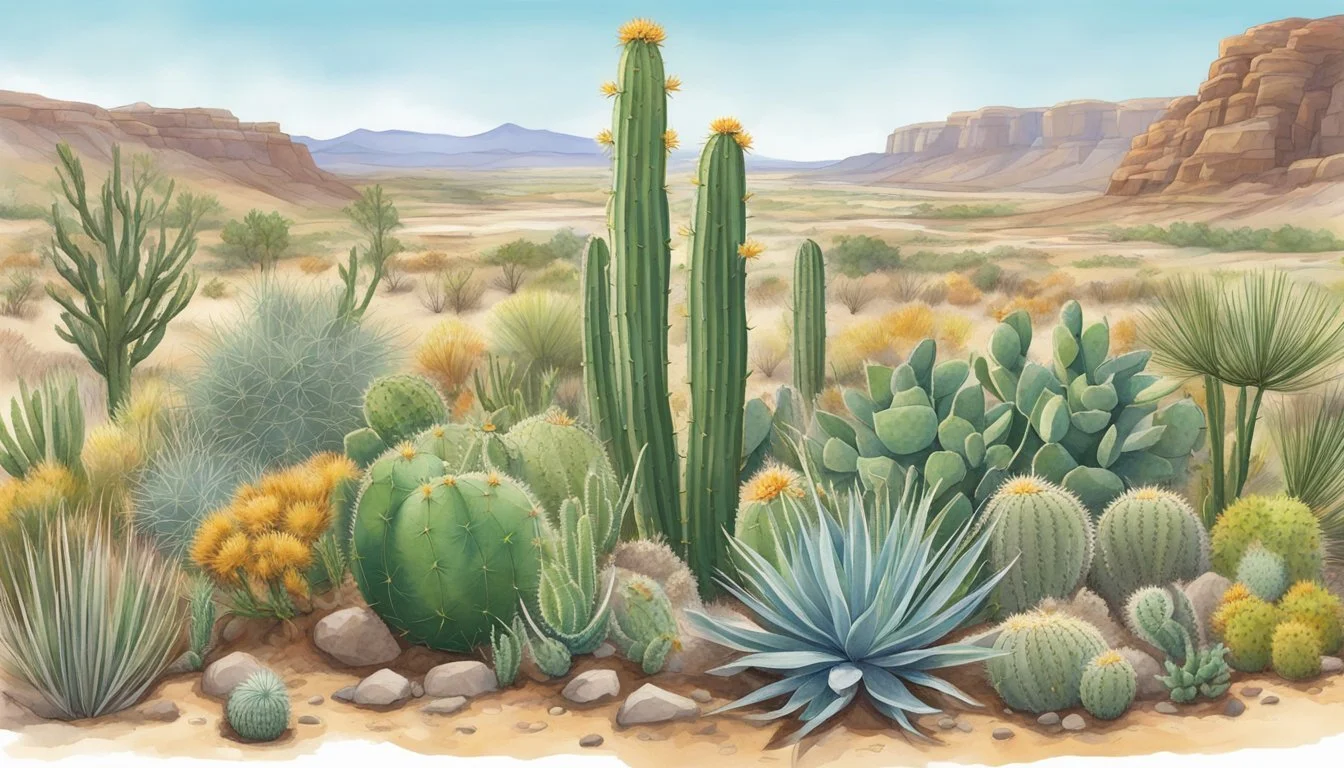Drought-Tolerant Plants in South Dakota
A Guide to Resilient Gardening
In the diverse landscape of South Dakota, where the weather can shift from extreme cold to sweltering heat, cultivating a garden requires thoughtful selection of plants. The state, known for its varied topography ranging from the Black Hills to the sprawling eastern prairies, presents unique challenges for gardeners and farmers alike. Drought-tolerant plants are particularly important, as they not only conserve water but also thrive in the region's often arid climate, reducing the need for irrigation and maintenance.
Native species have evolved over time to handle the fluctuations of South Dakota's climate, making them well-suited to the local environment. These plants are adept at surviving in the low-moisture conditions that can be prevalent, especially in the state's western regions. Utilizing drought-tolerant plants not only supports the surrounding ecosystem and local wildlife, but also offers a practical and sustainable approach to landscaping and agriculture in South Dakota.
Understanding Drought in South Dakota
Drought in South Dakota is influenced by local climate, prevalent soil types, and water usage patterns. These factors all play a role in the resilience and adaptation of drought-tolerant plants in the region.
Climate and Weather Conditions
South Dakota's local climate is characterized by a continental climate, with cold, dry winters and hot, wet summers. Drought conditions tend to fluctuate based on varying weather conditions, such as precipitation levels and temperature patterns. Recently, there has been an observed increase in the frequency and intensity of drought in the area, affecting the state's agriculture and water resources.
Soil Types and Their Role
Soil type is an important factor in a plant's ability to withstand drought. South Dakota has diverse soil compositions, with some areas having loamy soil that retains moisture well, while others are more sandy, leading to quicker water drainage and increased drought vulnerability. Understanding the soil type in a given location is essential for predicting drought resilience and selecting appropriate drought-tolerant plant species.
Water Usage and Conservation
Effective water usage and conservation strategies are crucial in South Dakota, especially in times of drought. Adapted irrigation practices can help manage water supply and aid in the moisture retention of soils, which directly impacts the health of drought-tolerant plants. Alongside this, the state is engaged in promoting water conserving techniques amongst local communities and farmers to maintain ecological balance and support agriculture during times of water scarcity.
Characteristics of Drought-Tolerant Plants
Drought-tolerant plants possess specific traits that enable them to survive and thrive in the arid conditions of South Dakota. These plants exhibit unique anatomical and physiological features that contribute to their resilience.
Anatomical Adaptations
Drought-tolerant plants often have deep roots that reach water sources unavailable to other vegetation. These extensive root systems are designed to maximize water uptake in dry environments. Moreover, some species have dark green leaves, which typically indicate a higher concentration of chlorophyll, allowing them to absorb sunlight more efficiently even during periods of water scarcity.
Physiological Adaptations
In terms of physiology, these plants have adapted to conserve water through a variety of mechanisms. They may reduce the size and number of stomata, the pores through which they lose water, to minimize transpiration. Additionally, some drought-tolerant species can alter their metabolism to reduce water usage without compromising growth.
The Benefits of Drought Resistance
The drought tolerance of native plants from South Dakota brings with it the advantage of low-maintenance care for gardeners and farmers due to their natural adaptation to the local environment. These survival strategies are not just about enduring dry spells but also about maintaining productivity and form during water shortages. As a result, they not only help preserve the local ecosystem but also support agriculture and horticulture in the region.
Native Plants of South Dakota
South Dakota boasts a diverse range of native plants that are well-adapted to the state's climate and soil conditions. These plants not only contribute to the local ecosystem by providing habitat and food for wildlife, but they also offer a variety of options for drought-resistant landscaping.
Grasses and Prairie Plants
Grasses: Central to the South Dakota prairies are grass species such as Big Bluestem (Andropogon gerardii) and Little Bluestem (Schizachyrium scoparium), which are known for their adaptability to varying conditions. Switchgrass (Panicum virgatum), with its resilience and robust growth, plays a pivotal role in supporting the ecosystem. Prairie Dropseed (Sporobolus heterolepis) garners attention for its fine-textured foliage and appealing fragrance.
Major Grass Species:
Big Bluestem
Little Bluestem
Switchgrass
Prairie Dropseed
Flowering Plants and Perennials
Flowering Plants: The vibrant Purple Coneflower (Echinacea purpurea) and cheerful Black-Eyed Susan (Rudbeckia hirta) are beloved by pollinators and gardeners alike. Prairie Coneflower (Ratibida columnifera), distinct with its elongated central cone, and Wild Bergamot (Monarda fistulosa), recognized for its aromatic leaves, are important for native pollinators. The early-blooming Pasqueflower (Pulsatilla hirsutissima) is a herald of spring in South Dakota.
Key Flowering Plants and Perennials:
Purple Coneflower
Black-Eyed Susan
Prairie Coneflower
Wild Bergamot
Pasqueflower
Shrubs and Trees
Shrubs and Trees: Durable and strong, the Bur Oak (Quercus macrocarpa) is a native tree well-suited to South Dakota's landscape, providing essential habitat for wildlife. The Ponderosa Pine (Pinus ponderosa) is another native species that thrives in the Black Hills region. Among shrubs, American Plum (Prunus americana) and Golden Currant (Ribes aureum) are notable for their wildlife value and their use in habitat restoration projects.
Notable Shrubs and Trees:
Bur Oak (Quercus macrocarpa)
Ponderosa Pine (Pinus ponderosa)
American Plum (Prunus americana)
Golden Currant (Ribes aureum)
Creating a Drought-Resistant Garden
In South Dakota, where water conservation is essential, incorporating native plants and sustainable gardening practices can result in a beautiful, low-maintenance garden capable of withstanding the local climate.
Planning and Design
When designing a drought-resistant garden in South Dakota, understanding the local climate is the first crucial step. Gardeners should assess the landscape's exposure to sunlight and shade throughout the day, which will influence plant selection and placement. A well-thought-out design includes considering the garden's size and form, integrating features like curved pathways or rock gardens that can help minimize water usage and maximize aesthetic appeal.
Selecting Suitable Plants
Using native plants tailored to South Dakota's environment ensures a low-maintenance garden that requires less water and fewer nutrients. These plants are naturally adapted to the soil and local climate, reducing the need for additional organic matter or compost. Gardeners should opt for species that can thrive in dry conditions, like the tough Stonecrop, which can endure both drought and freezing temperatures. Furthermore, incorporating flowers that attract pollinators adds life and supports the local ecosystem.
Maintenance and Upkeep
A critical aspect of maintaining a drought-resistant garden is employing efficient gardening practices to conserve water and nutrients. This includes using mulch to retain soil moisture and protect plant roots from extreme temperatures. Strategically timed watering, ideally in the morning, minimizes evaporation loss. Gardeners should be vigilant about preventing fungal diseases, which are less common in dry conditions but can still occur, by allowing ample space between plants for air circulation.
Supporting Wildlife and Ecosystems
Drought-tolerant plants play a crucial role in preserving South Dakota’s natural heritage by supporting its diverse ecosystems. They help in cultivating a habitat that bolsters biodiversity, providing essential services to various wildlife species.
Attracting Pollinators
To maintain healthy environments, it's imperative to attract pollinators, as they are critical for the reproduction of many plant species. In South Dakota, native flowers like the purple coneflower and the black-eyed Susan are paramount in drawing pollinators such as bees and butterflies. These plants are not only resilient to dry conditions but also serve as rich nectar sources for these vital creatures. For instance:
Bees: Adept at pollination, bees require ample nectar, and native plants like the leadplant and wild bergamot offer this, particularly in prairie ecosystems.
Butterflies: Providing both nectar and larval host plants, flowers such as milkweed are essential for supporting butterfly populations.
Providing Food and Shelter
Beyond attracting pollinators, drought-tolerant plants are integral to supplying food and shelter for a broad range of wildlife. They offer seeds, berries, and foliage that are edible to fauna. Moreover, the structural complexity of native plant communities creates an assortment of habitat options. For example:
Birds: Many bird species rely on the seeds of drought-tolerant grasses and forbs, while shrubbery like chokeberry provides both sustenance and nesting sites.
Small Mammals: Groundcover and dense grasses afford protection and materials for building burrows or nests.
In this way, the careful selection of drought-tolerant flora aids in protecting the ecological fabric of South Dakota’s landscapes.
Enhancing Landscape with Native Species
In South Dakota, incorporating native plants not only ensures a garden's success but also sustains local ecology. These species are tailored to the region's climate, providing a sustainable and striking landscape option.
Integrating Ornamental Qualities
In the quest for beauty and sustainability, South Dakota's native flora offers a plethora of ornamental traits. Amorpha canescens, commonly known as leadplant, brings striking silver-green foliage and spiky purple flowers, attracting a range of wildlife. For a pop of color, the prairie coneflower displays prominent red and yellow flowers that stand out in any garden.
Year-Round Interest
To maintain visual appeal throughout the seasons, South Dakota landscapes should feature plants that offer year-round interest. The deciduous shrub known as Common Ninebark, with its peeling bark and clusters of white flowers, provides texture and color even in the dormant season. Additionally, the iconic sunflower, with its bright yellow blooms, ensures summer vibrance.
Utilizing Grasses and Groundcovers
South Dakota's prairies are well represented by an array of native grasses and groundcovers that lay the foundation for a robust landscape. Switchgrass, with its tall structure and airy seed heads, adds height and movement. For lower growth, bearberry forms dense mats of glossy leaves and red berries, offering both shade tolerance and a food source for local fauna.
Conservation Through Native Horticulture
Incorporating native plants into South Dakota's landscapes preserves not only the state's natural heritage but also enhances biodiversity. By prioritizing native species, South Dakotans contribute to environmental sustainability and conservation efforts.
Preserving South Dakota’s Natural Heritage
South Dakota is home to a variety of ecosystems, from the Black Hills to the prairies. Each of these ecosystems supports native plants with deep ecological connections to the land. Conservation of these local flora is crucial, as they maintain soil health, regulate water cycles, and provide habitats for indigenous wildlife. Organizations and individuals are working to protect species such as the Purple Coneflower (Echinacea angustifolia) and the Prairie Blazing Star (Liatris pycnostachya), which are not only vibrant parts of the natural landscape but hold cultural significance for the region's history.
Promoting Biodiversity
Biodiversity is the backbone of robust natural systems. In South Dakota, using native plants in horticulture is a key strategy for preserving species diversity. This practice supports native ecosystems by providing essential food sources and habitats for local pollinators and other wildlife. It reduces the threat of invasive species, which can dominate and disrupt these complex networks. Native plants such as the Pasque Flower (Pulsatilla hirsutissima), South Dakota's state flower, adjust to local conditions much more efficiently, thereby reducing the need for water and care compared to non-native species.
Educational Resources and Local Initiatives
In South Dakota, entities like McCrory Gardens and SDSU Extension provide vital resources and programs aimed at fostering community involvement and educating locals on drought-tolerant plants.
McCrory Gardens and SDSU Extension
McCrory Gardens, a botanical garden and arboretum operated by South Dakota State University (SDSU), plays a crucial role in offering educational resources about drought-resistant flora. They offer interactive programs and guided tours that delve into the specifics of plant species well-suited for South Dakota's climate. SDSU Extension beefs up this educational aspect by disseminating research-based knowledge on drought management to farmers and homeowners, helping them to integrate sustainable practices in their gardens and fields.
Community Engagement and Sharing Knowledge
Community involvement is key to spreading the word about gardening education in relation to drought-tolerant plants. SDSU promotes engagement through initiatives like the Native Plant Initiative, which focuses on understanding which native plants are best for restoration and conservation efforts. By involving youth and local organizations in workshops and restoration projects, knowledge about maintaining green spaces despite a challenging climate is actively shared. These efforts establish Brookings as a hub for learning and collaboration in the midst of South Dakota's push for sustainable horticulture.
Frequently Asked Questions
South Dakota's climate presents unique challenges for gardening, but several plant species are well-adapted to thrive in its dry conditions. This section answers common queries about the variety of drought-tolerant plants suited to South Dakota's landscape.
What are some native flowers of South Dakota that are drought-tolerant?
Native flowers such as the Purple Coneflower and Blanket Flower have deep roots and foliage that help them conserve water, making them particularly resilient during dry periods in South Dakota.
Which shrubs thrive best in the arid climate of South Dakota?
Shrubs like the Leadplant and the Chokeberry are known for their ability to withstand long spells without water, and they can flourish in South Dakota's arid conditions.
Can you list drought-resistant perennials suitable for growing in South Dakota?
Perennials such as the Yarrow and Russian Sage are excellent for South Dakota gardens due to their drought-resistant properties and ability to adapt to the local climate.
What types of evergreens can survive South Dakota's dry conditions?
Junipers and Pinyon Pines are evergreens that require minimal water, making them suitable choices for South Dakota landscapes prone to drought.
Are there any ground cover species well-adapted to South Dakota's low-water environments?
Ground covers like the Prairie Winecups and Sedums are equipped to thrive in low-water environments in South Dakota, providing both coverage and color with minimal water requirements.
Which trees are known for their drought tolerance in South Dakota?
Trees such as the Bur Oak and Hackberry can endure drought conditions in South Dakota thanks to their deep root systems and hardy nature.








